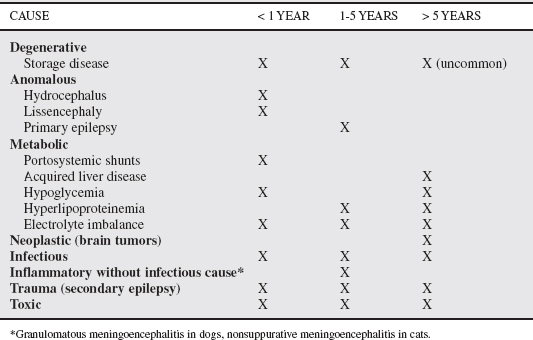2 Seizures
Below is a list of differentials for seizures and the age that they are most likely to occur (Table 2-1). Note that a young dog (younger than 6 months of age) is more likely to have seizures as a result of a congenital disorder (hydrocephalus, lissencephaly, portosystemic shunt), intoxication, or infectious disease, whereas an older dog (older than 6 years of age) is more likely to have neoplastic disease. Epilepsy is more likely to occur in middle-age animals.
The most important first step is to rule out progressive diseases. The diagnostic steps will vary with the signalment and clinical signs. Most animals require a complete blood cell count (CBC), biochemical profile, urinalysis, and liver function test such as bile acids. It is a good idea to obtain baseline values for these tests even in animals with epilepsy because many of the anticonvulsants can affect liver function. Neuroimaging (computed tomography or magnetic resonance imaging) is often recommended for both young and older animals and cerebrospinal fluid analysis with titers for infectious diseases is helpful in animals suspected of having encephalitis. I do not routinely request either computed tomography/magnetic resonance images or cerebrospinal fluid evaluation in animals with a signalment or history that suggest epilepsy.
< div class='tao-gold-member'>




